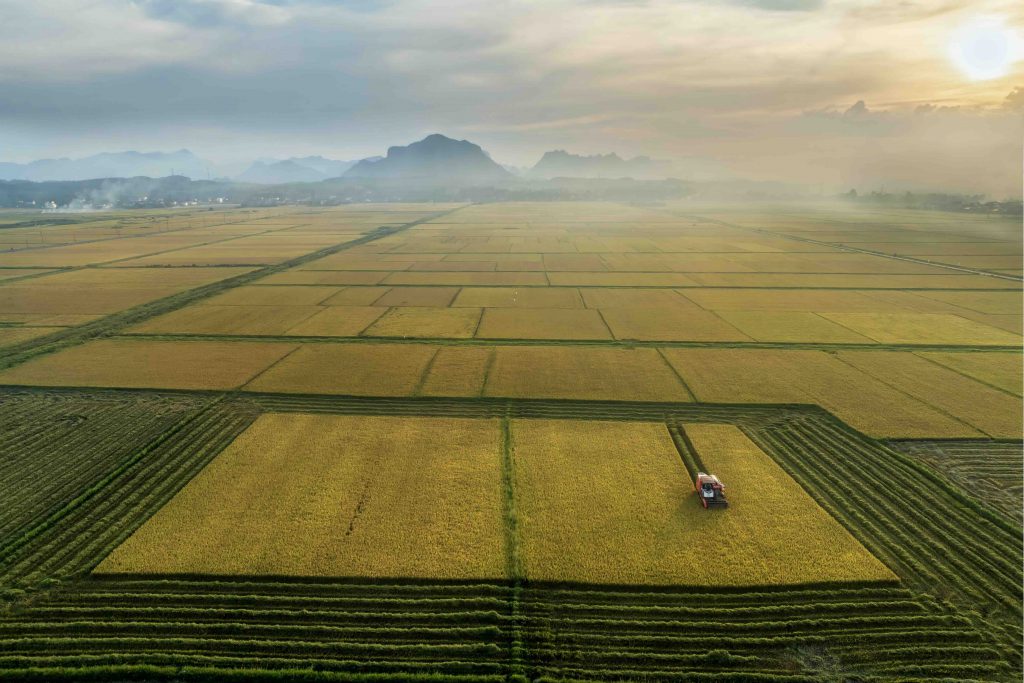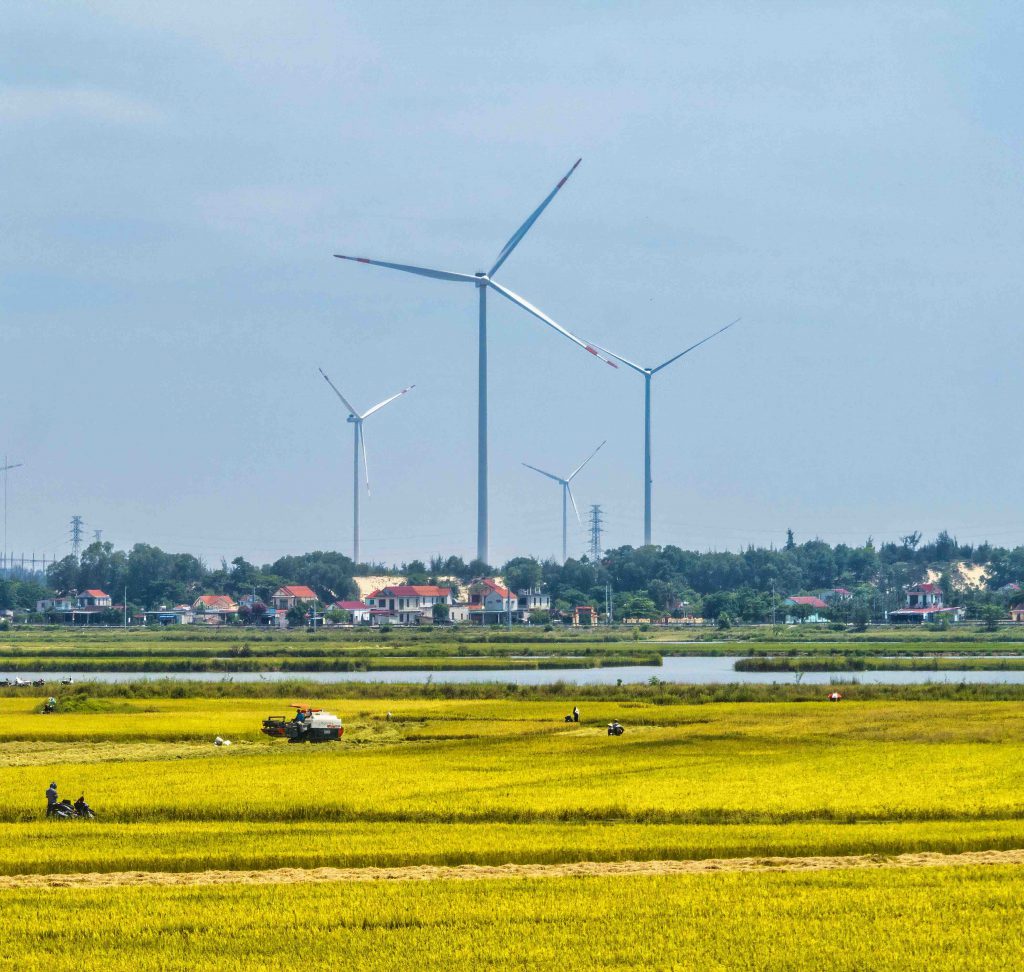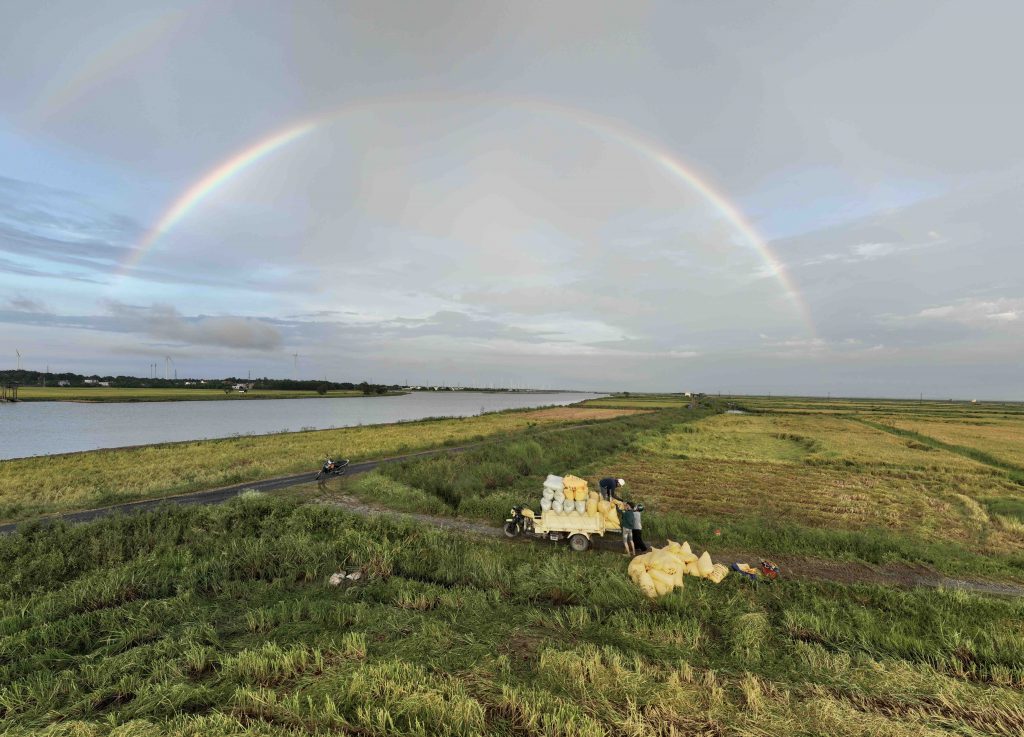Story: Hoang Bui
Photos: Nguyen Hai
If there’s a place in Central Vietnam that stays with you long after you’ve left, it’s Hac Hai Lagoon. Tucked between the former districts of Quang Ninh and Le Thuy in what was once Quang Binh – now part of Quang Tri Province – this brackish lagoon may not dazzle with dramatic beauty, but it holds a quiet power: a peaceful charm that gently stirs memories and emotions.
To the local people, Hac Hai is more than just a name on a map. It is a cultural current, a vital thread woven into every farming season. Here, you can hear the whisper of kites in the afternoon breeze, watch the moon drift lazily across the water, breathe in the scent of fresh straw at harvest time, and meet warm-hearted people whose lives reflect the gentle spirit of this peaceful countryside.

Each year, as summer fades and the first cool winds of autumn arrive, Hac Hai awakens to a new season – the golden one. Ripe rice fields stretch endlessly along the lagoon’s banks, glowing in the sunlight. It’s a season of harvests, of laughter in the fields, of radiant smiles amid sweat and mud. But the golden season here is unlike any other, carrying the vastness of water, the bustling rhythm of the delta, and a rare stillness that invites you to pause, breathe with the wind, and take in the scent of ripening grain.
Spanning about 12 square kilometers, Hac Hai is where the Long Dai and Kien Giang rivers converge before flowing into the Nhat Le Sea. For generations, this quiet body of water has nourished the rice fields and sustained the lives of those bound to the land, the tides, and the winds of change. Locals often call it the Golden Basin – a place where each harvest leaves behind not only full granaries, but also a deep, unspoken nostalgia in the hearts of those who know it best.
A local saying goes: “First is Dong Nai, second are the two districts,” referring to the impressive rice yields and the rich delta region surrounding Hac Hai. Another old verse reads: “Mount Mau as the brush, Hac Hai as the inkstone.” The imagery compares Mount Dau Mau to a celestial pen and Hac Hai to an inkstone, symbols of a land that has produced national heroes like Le Thanh Hau Nguyen Huu Canh and General Vo Nguyen Giap. Today, those symbols remain vivid and intimate, part of the collective memory of a homeland.

During the harvest, Hac Hai comes alive. At dawn, before the sun rises, the fields echo with the voices of farmers heading to work. Some row along narrow canals toward the paddies, while others carry bundles of rice to the drying yards. Children follow close behind, helping their parents and laughing in the golden light. The sound of footsteps wading in the water, of laughter, of paddles striking the lagoon all blend into a joyful and emotional harvest symphony.
To walk among the golden fields by the lagoon is to witness a rustic beauty that’s hard to forget. Each grain of rice is a drop of sweat, a prayer for good weather, a hope cultivated through months of toil. The scent of freshly harvested rice is unlike any other – earthy, rich, and deeply tied to the land. Elders say that if you stand in the middle of a ripe rice field, close your eyes, and take a deep breath, it can bring back your entire childhood – before the days of internet and motorbikes, when afternoons were filled with kite-flying and lullabies sung in the midday sun.
The harvest season is also one of reunion. Children who moved away return home to be with their parents and grandparents. A harvest meal may be simple – a bowl of malabar spinach soup, some braised fish, spicy fish sauce, and fresh rice – but it warms the heart. Today, Hac Hai is beginning to take on a new identity. People are speaking of “harvest tourism” and eco-tourism. Visitors don’t come to harvest rice, but to experience the season’s atmosphere. They row boats past golden paddies, listen to tales about the lagoon, dine on home-cooked meals, listen to folk songs, and watch the sun set over the rippling gold fields. Many say that Hac Hai, in its golden season, is a treasure of both ecology and culture. Here, harvest time is not just about reaping crops, but about gathering memories and emotions. It’s not just about rice but about ancestors, folk songs, and layers of seasons embedded in sunlight.

Like many other regions, Hac Hai is facing the threats of climate change and shifting seasons. Overfishing and overfarming put the lagoon’s delicate ecosystem at risk. Preserving the golden harvest, culture, and unspoiled landscape will require collective effort from the community, local authorities, and all who love and respect the land.
They say travel isn’t just about going; it’s about understanding. Come to Hac Hai in its golden season, and you won’t just see a rural landscape as beautiful as a painting. You’ll come to understand the deep bond between people and nature. You’ll begin to appreciate the small things – quiet, lasting, and sacred. You may not remember the name of every village or stretch of the lagoon, but you’ll remember the golden rice glowing in the sun, the gaze of a mother bringing lunch to the fields, and the lull of a folk song echoing along the water’s edge.










